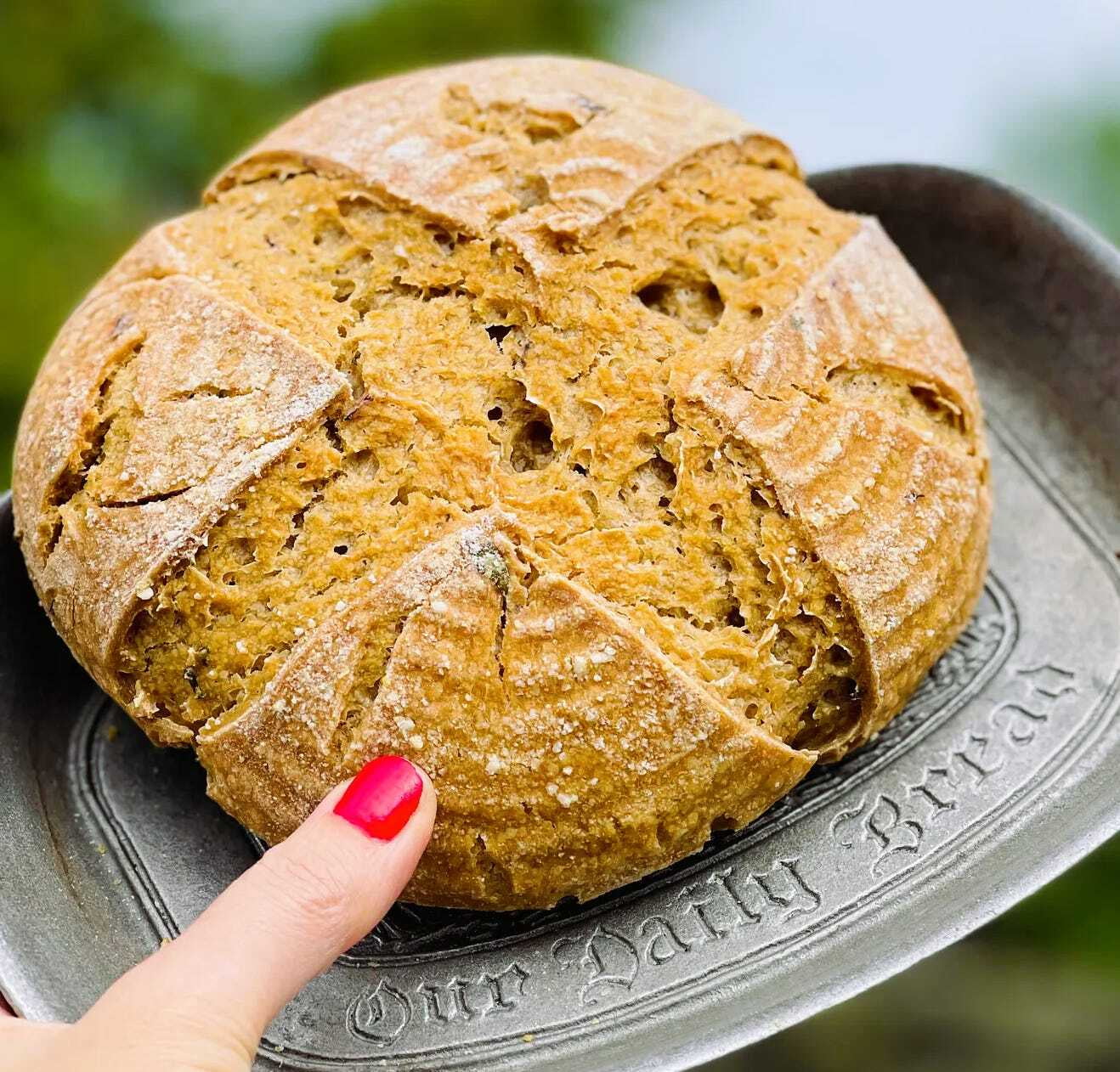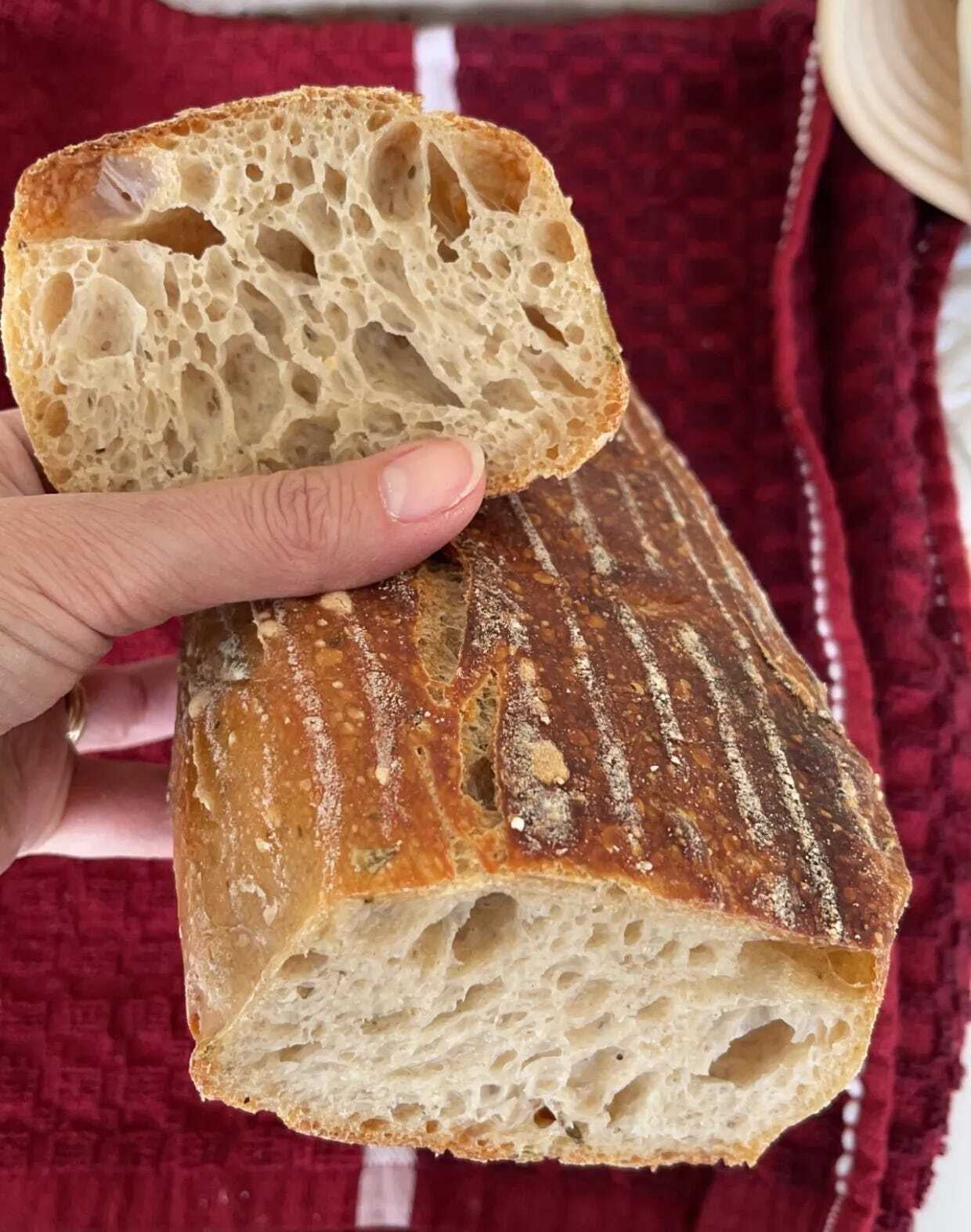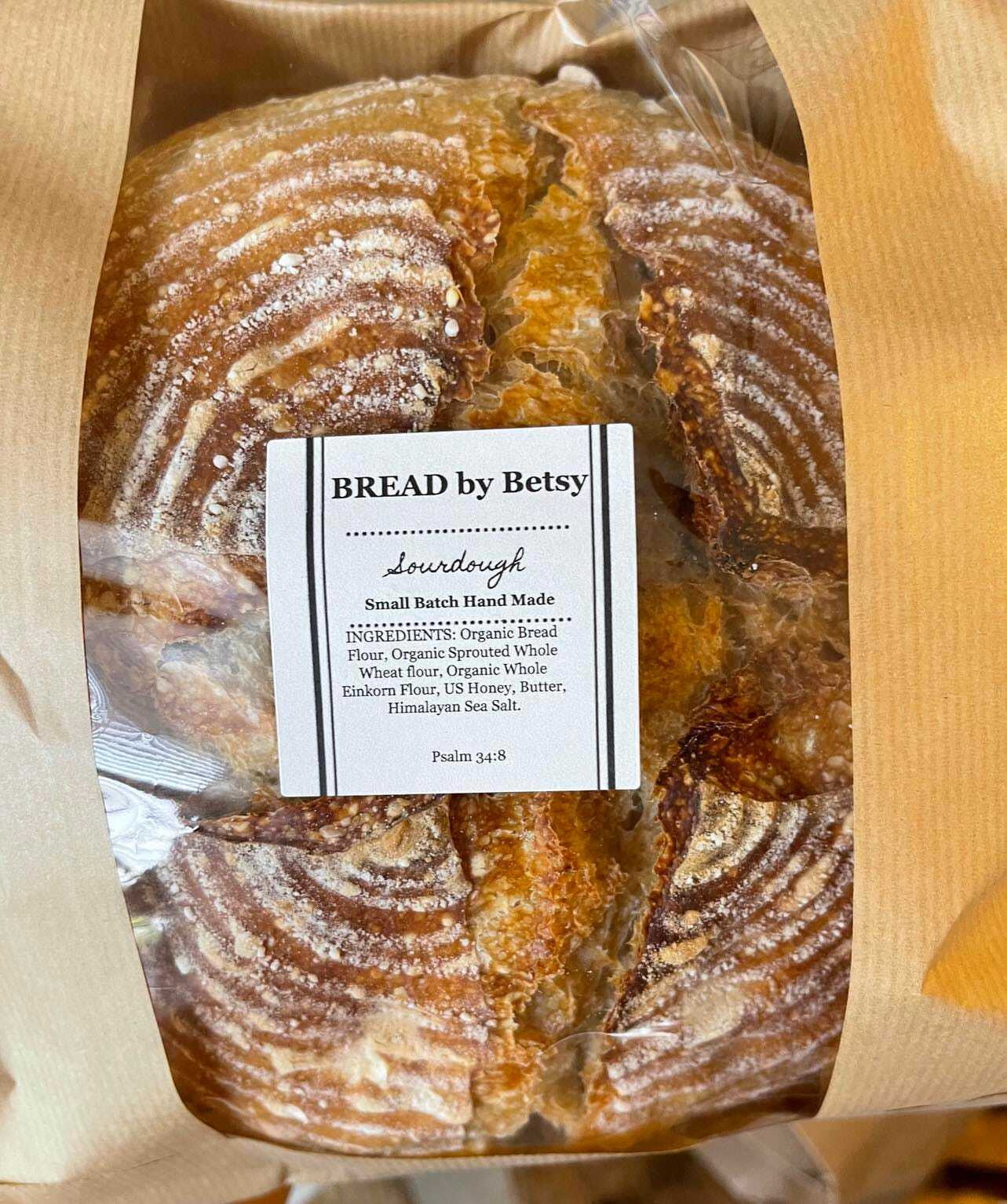Sourdough Bread Joy! - Fermented Foods #1
Sourdough Bread Joy! - Fermented Foods #1

RICHER NUTRITION - Grain contains “anti-nutrients” that interfere with the absorption of essential nutrients. When you soak or long-ferment the grains it allows for better digestion so your body can actually utilize the nutrients from it. “Anti-nutrients” are found in basically all grains. (Nutrition hack: you will find that pre-soaking other grains like rice and oatmeal before cooking and eating can help make those more easily digestible as well).
HOW TO BEGIN - To make sourdough bread, you will need a “starter” from a friend (or it can be ordered online). The starter is the leaven, or “levain” you use instead of baking yeast. You will “feed” your starter by giving it a mixture of equal parts warm, non-chlorinated water and unbleached flour. You don’t want any biocides that could kill the wild yeast and halt the lactic acid bacteria that helps your dough rise. Always save a portion of your starter to continue the life of your sourdough.
When I first started my sourdough journey with a starter from my sister, it took a while to get the hang of it. But it was fun to practice, read, and watch helpful videos. My confidence increased as my taste testers (family and loved ones) enthusiastically approved! There’s great joy to be found in getting your hands into this doughy process and lovingly making this nutritious comfort food in your own home!
FINDING SUPPORT - There are social media groups you can join where people share helpful tips that can help you troubleshoot as you learn.

The process of making sourdough can last anywhere from 8-24+ hours. It is an act of love without a doubt. One critical part is a 3-hour period just after you make your dough from your well-fed and bubbly starter (usually it takes 4 hours after feeding from the fridge for the starter to be ready to use) in which you stretch and fold your dough multiple times every 30 minutes for six rounds. This will yield a beautiful crumb inside the final loaf as the bubbles form. I love to do the final rise after I’ve formed the dough in a wicker/bamboo banneton (like a basket) that is dusted with a little rice flour (or regular flour if you don’t have rice flour). Then, after an overnight cold ferment in the fridge in the bannetons, I heat my Dutch oven, or my covered loaf pans, gently transfer the loaves to them, and put back into a hot oven to form a lovely, crusty outside, and a rich, pliable inside.
If you have wanted to make your own sourdough, but are afraid of the process, don’t be. Jump in and join the adventure! There’s a way for every personality to enjoy sourdough bread-making. You might be the precise person who wants to measure everything on a scale and follow a recipe exactly every time, or you may be like me and first learn the process, and then do it all instinctually by feel. Do what brings you the most joy!
EVERY DAY? If you don’t have time in your schedule to make sourdough multiple times a week, no worries! Just keep your starter covered in your fridge, then pull it out and feed it four hours before you want to make the dough. I usually plan for two days’ prep if I want bread, because an overnight cold ferment gives it such a rich depth of flavor, but there are some recipes that allow you to bake it in the evening if you get started in the morning.
There are many resources that can guide you to make the loaf you want. If you live in North Carolina, we have a fabulous resource of a variety of freshly milled organic flours in Lindley Mills in Graham, NC. They even carry a couple sprouted grains, which can further add to the nutrition and digestibility of your loaves! I like using a combination of their bread flours, high protein flours, and soaked grains. They sell larger 20, 25 & 50 lb. bags if you’re serious and can schedule an appointment to pick up, or if you have several mouths to feed. They need a couple days’ notice to prepare a larger order, but they have some smaller bags that can be shipped, as well.
TIPS - 1. A higher moisture dough makes a better “crumb” on the finished bread (the bubbles inside). But it can be a sticky mess to work with. Have a little bowl of pure water beside your dough bowl and dip your clean hands in the water each time you do a stretch and fold session. This way, you won’t have so much dough stuck to your hands!
2. Sourdough likes a warm environment to raise well. Make sure you make it comfortable, and it will do its best for you!
3. Only use non-chlorinated water and unbleached flours in your bread.
4. I sprinkle either rice or grits in the bottom of my covered bakers to prevent the bottom of the loaf from burning. Then, I use parchment paper to line the pan. In fact, I put the dough into the parchment paper to help me transfer it carefully to the hot pan.
Below are some helpful websites to get you started on learning more about the ins and outs of sourdough. Happy Baking!!!
Farmhouse on Boone - Numerous sourdough recipes including “discard” recipes like pretzels, scones and cookies.
So Blessed Home - So Blessed Network & Daily Sourdough (YouTube Channel - You will find Jeanie Hakes’ voice soothing and encouraging on your journey! She also offers starters for sale on her website.)
Little Spoon Farm - Lots of beginner recipes to get you started.
The Spruce Eats - Some nice, hearty rustic recipes.
Little Spoon Farm Great starter tips!
Sourdough Enzo IG - Instagram for short videos
Ballerina Farm IG - Super charming Insta videos

THIS WEBSITE IS NOT INTENDED FOR PROVIDING MEDICAL ADVICE
